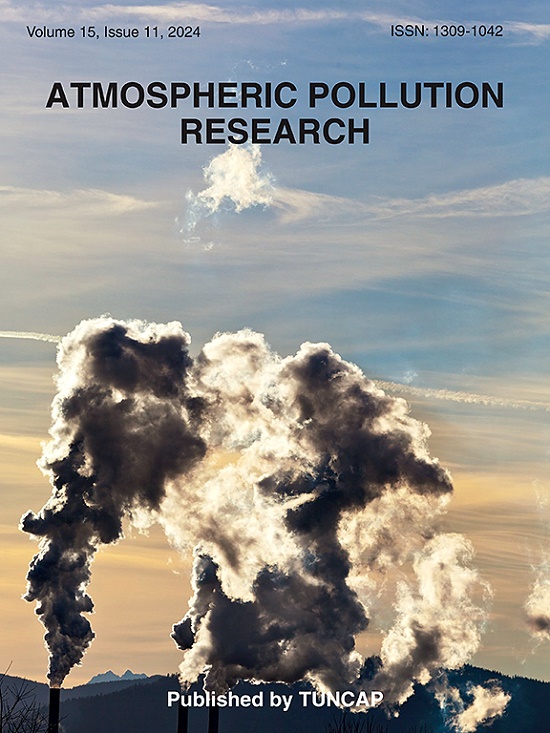Long-term exposure to ambient air pollution and incident nephritis: A prospective cohort study in the UK Biobank
IF 3.9
3区 环境科学与生态学
Q2 ENVIRONMENTAL SCIENCES
引用次数: 0
Abstract
Substantial studies have highlighted the implications of air pollution in relation to several kidney diseases. However, studies on the relationships of long-term exposure to NO2, NOx, PM2.5, PM2.5-10, PM10 with the incidence of nephritis are relatively scarce. In our prospective cohort study, 446,626 participants from the UK Biobank who had no kidney diseases at baseline were enrolled. Annual concentrations of particulate matter (PM) with diameters ≤2.5 μm (PM2.5), between 2.5 and 10 μm (PM2.5–10), and ≤10 μm (PM10), as well as nitrogen dioxide (NO2) and nitrogen oxides (NOx) were gauged by land-use regression models. We employed Cox proportional hazards models to examine the associations of air pollutants with the incidence of nephritis, adjusted for potential covariates. We applied restricted cubic spline (RCS) analysis to find the exposure-response relationship. 3,455 cases were observed through a median follow-up duration of 13.58 years. Our results showed the enhanced risk of nephritis was linked to per interquartile range (IQR) increase in NO2 (hazard ratio (HR): 1.09, 95 % confidence intervals (95 %CI): 1.04–1.14) and in NOx (1.05, 1.01–1.08). We found nonlinear relationships between the levels of NOx, PM2.5, and PM2.5-10 and incident nephritis. They all displayed a tendency of initial rapid increase followed by a subsequent gradual growth. We didn't find nonlinear relationships between NO2 and PM10 concentrations and incident nephritis. Thus, exposure to air pollution may induce the incidence of nephritis, emphasizing the importance of controlling ambient air pollution for its prevention.
长期暴露于环境空气污染和突发肾炎:英国生物银行的一项前瞻性队列研究
大量研究强调了空气污染与几种肾脏疾病的关系。然而,长期暴露于NO2、NOx、PM2.5、PM2.5-10、PM10与肾炎发病关系的研究相对较少。在我们的前瞻性队列研究中,从英国生物银行招募了446626名基线时无肾脏疾病的参与者。利用土地利用回归模型测量粒径≤2.5 μm颗粒物(PM2.5)、2.5 ~ 10 μm颗粒物(PM2.5 - 10)和≤10 μm颗粒物(PM10)的年浓度以及二氧化氮(NO2)和氮氧化物(NOx)。我们采用Cox比例风险模型来检验空气污染物与肾炎发病率之间的关系,并对潜在协变量进行了调整。我们应用限制三次样条(RCS)分析找出暴露-响应关系。中位随访时间为13.58年,共观察3455例病例。我们的研究结果显示,肾炎的风险增加与NO2(风险比(HR): 1.09, 95%可信区间(95% CI): 1.04-1.14)和NOx(1.05, 1.01-1.08)的每四分位数范围(IQR)增加有关。我们发现氮氧化物、PM2.5和PM2.5-10的水平与肾炎发病率之间存在非线性关系。它们都表现出先快速增长后逐渐增长的趋势。我们没有发现NO2和PM10浓度与肾炎发生率之间的非线性关系。因此,暴露于空气污染中可能诱发肾炎的发生,强调控制环境空气污染对预防肾炎的重要性。
本文章由计算机程序翻译,如有差异,请以英文原文为准。
求助全文
约1分钟内获得全文
求助全文
来源期刊

Atmospheric Pollution Research
ENVIRONMENTAL SCIENCES-
CiteScore
8.30
自引率
6.70%
发文量
256
审稿时长
36 days
期刊介绍:
Atmospheric Pollution Research (APR) is an international journal designed for the publication of articles on air pollution. Papers should present novel experimental results, theory and modeling of air pollution on local, regional, or global scales. Areas covered are research on inorganic, organic, and persistent organic air pollutants, air quality monitoring, air quality management, atmospheric dispersion and transport, air-surface (soil, water, and vegetation) exchange of pollutants, dry and wet deposition, indoor air quality, exposure assessment, health effects, satellite measurements, natural emissions, atmospheric chemistry, greenhouse gases, and effects on climate change.
 求助内容:
求助内容: 应助结果提醒方式:
应助结果提醒方式:


